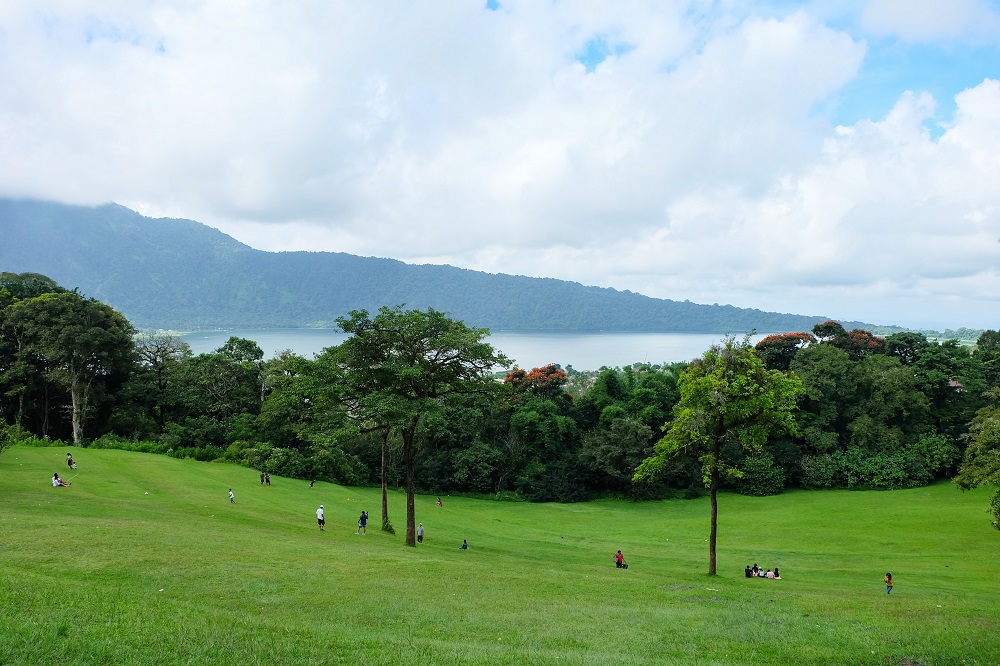
In Bali’s central highlands, it’s all about nature, where rugged mountainsides meet peaceful lakes; an alpine pocket of dewy forests and cool misty climes.
Bedugul, Pancasari and Munduk are a far-cry of the Bali many expect to see. Instead of sunny shores and palm-lined beaches, it’s a still, crisp air and stickly pines. These are Bali’s central highlands, over 1000m above sea level, the island’s central peak before you begin the descent to the north coast.
At this altitude the climate is refreshingly cool; when the day ends and begins, the clouds hang on the crest of the thickly forested hillsides, giving the surrounding area a mysterious mountain atmosphere. It is fertile and abundant, the source of much of the fresh produce for Bali’s restaurants, with fruits and vegetables overflowing the local market stalls. It also provides much of the fertility for the rest of Bali, with three of the island’s lakes all found in this one region.
In fact, all the mountain lakes are found in a giant caldera, created by an ancient cataclysmic eruption. The eruption left behind a legacy of dormant volcanoes, lakes and fertile soils. They have always been considered sacred: the realm of Dewi Danu, goddess of the lake. Even in Bali’s ancient past, the people understood that these lakes were the island’s reservoirs, feeding the rivers and aquifers, and thus providing fertility and prosperity across the lands. As a society that followed a ‘religion of water’, or agama tirta, these lakes were deemed sacred.
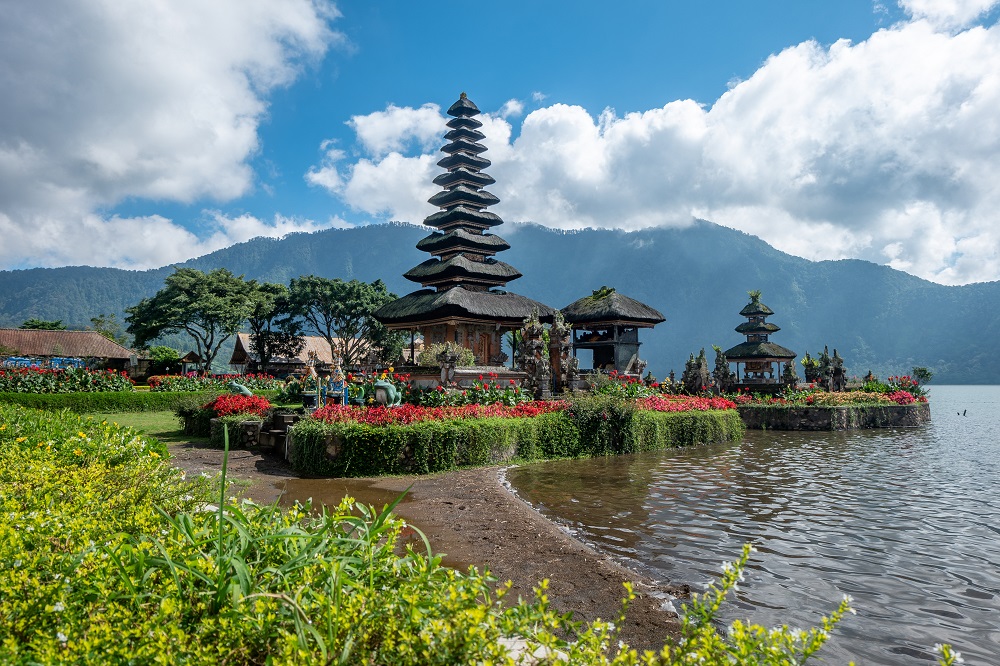
Built in 1633, Pura Ulun Danu Beratan is one of Bali’s major temples and nestles on the shore of Lake Beratan. A visit to the expansive temple complex is impressive. In the early morning, the rays of the ascending sun sweep out the darkness of the night as it rises above the lake’s encompassing ridge. When the lake is full in the rainy season, water completely surrounds the main temple on the lake, which features an 11-tiered meru shrine temple, making it appear to be floating. If you want a different view of the temple, you can rent a traditional row boat and paddle out beside it, a great spot for a photo as well, with the temple, lake and surrounding mountains making for quite a scene.
The temple complex opens at 6am, which is in fact when the view is at its best. At around 10am, groups of visitors begin to descend off of big buses and ruin the tranquil atmosphere, so come early and soak up the fresh morning air.
Climbing deeper into Bali’s highlands, beyond Bedugul up into the village of Munduk where you will find the ‘twin lakes’ of Tamblingan and Buyan. The ‘twin lakes’ were once one majestic body of water, cosying around the foot of Mt.Lesung, before a landslide separated them into the two distinct lakes they are now.
It was recorded in history, on ancient prasasti (copper inscriptions) a community of Bhujangga Waisnawa (Wisnu worshippers) were assigned to maintain the sanctity of these lakes as far back as the 9th century. Many of the kings that followed continued to enforce this community’s commitment through the centuries.
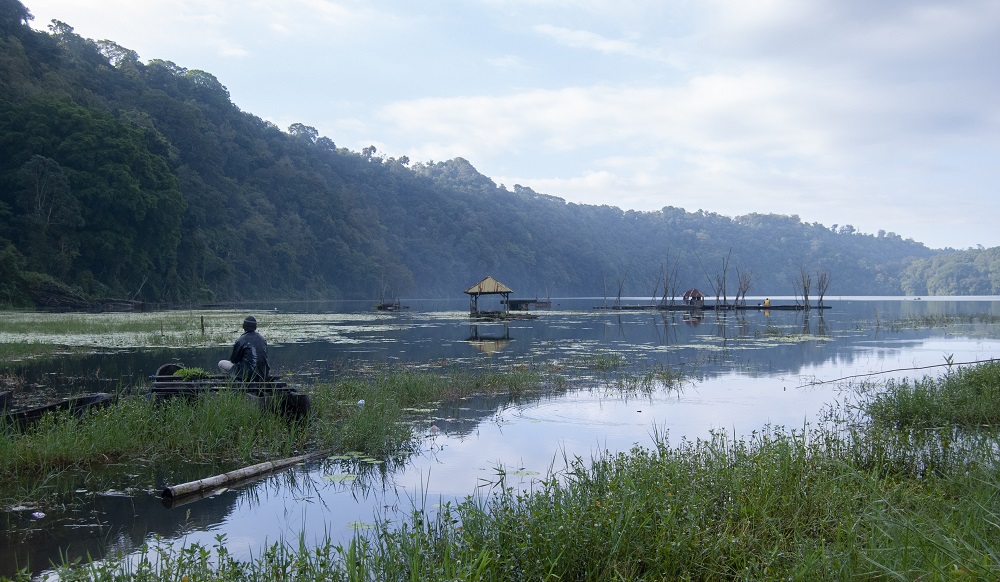
Tamblingan Lake is the smallest of the three lakes, but easily the most serene: the surrounding banks are steep and thick with trees, seeming to rise straight out of the eerily still waters, caught in this natural basin. This serenity was clearly not lost on ancient residents of Tamblingan. Its very name attests to this: tamba, meaning medicine, and elingang, meaning spiritual strength. This is owed to a story written in a lontar (Lontar Kutara Kanda Dewa Purana Bangsul).
It stated that the village had been struck with some kind of disease epidemic, and one devout man went to fetch water from the lake. Thanks to his spirituality and worship, the water was able to heal all those who had been sick. Mysteriously, the community of one village split into four villages (Munduk, Gobleg, Gesing and Umajero), named thereafter as Catur Desa (four villages). Together, the four villages continue to guard the spirituality of Tamblingan.
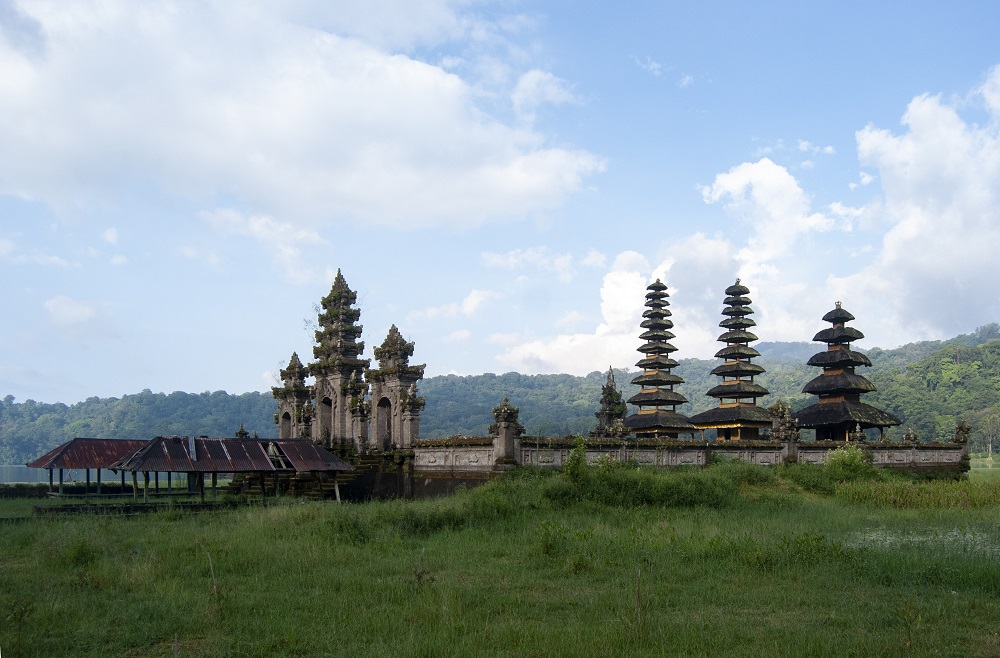
There are a total of 11 sites of worship scattered around the lake. The most prominent is Pura Gobleg found on the southern shore, a stunning water temple that sits on the shallow shores, which dramatically gets engulfed in water when the rains come in and the lake water rises. This is the largest of the temples around the lake.
Across the waters, one will find Pura Ulun Danu Tamblingan, a humble temple engulfed by the surrounding vegetation. The ancient meru shrines themselves have been overtaken, with ferns and moss growing out of their ijuk roofs.
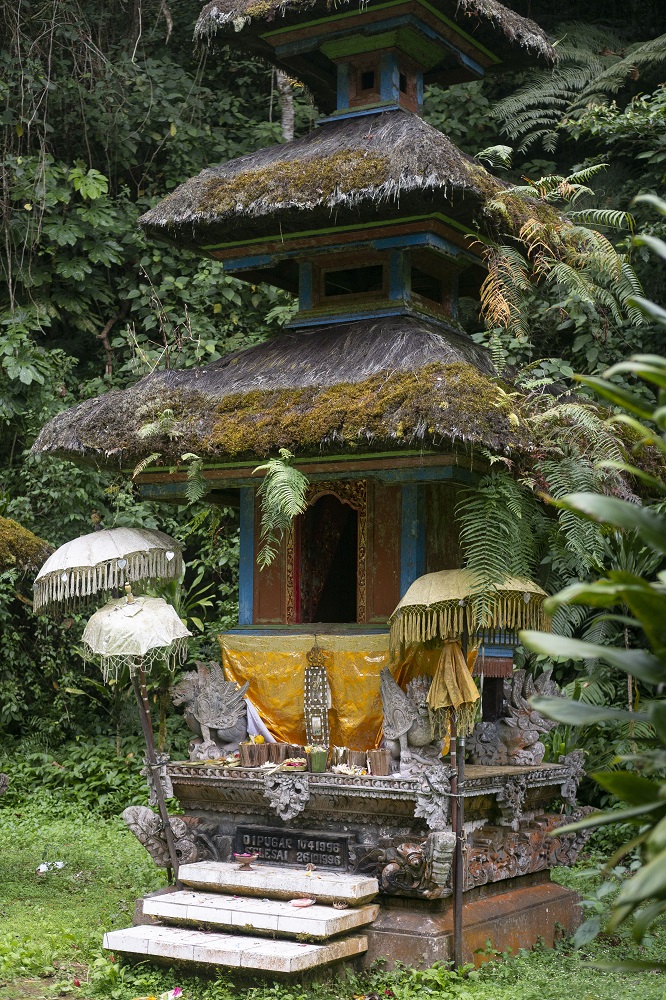
On the eastern shore, accessed by the simple traditional boats carved out of trees, stand more temples, including Pura Dalem Tamblingan; Pura Pande Tamblingan, visited by the smith clans (pande) of Bali; as well as two pre-Hindu worshipping grounds, Pura Embang and Pura Serangan, where holy giant holy stones are venerated — harkening back to Bali’s animist past.
A scenic road takes travellers on the ancient caldera rim that travels the length of both Buyan and Tamblingan, creating a superb perch from which to enjoy the vistas across these two sacred lakes.







